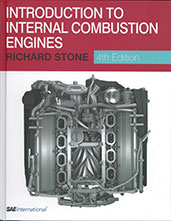Technical Paper
Conversion of a Diesel Engine for Gaseous Fuel Operation at High Compression Ratio
1991-02-01
910849
A Waukesha VR 220 naturally aspirated Diesel Engine has been modified to operate with a high compression ratio fast-burn spark-ignition combustion system. Since the application of greatest interest is for Combined Heat and Power (CHP), the majority of data have been obtained with the engine operating at full throttle and 1500 rpm. The philosophy of the open chamber combustion system design is described, and this includes a discussion on the selection of the compression ratio. Results are presented for the energy balance and the emissions, for a wide range of air fuel ratios. The experiments have been conducted with natural gas and natural gas/carbon dioxide mixtures (to simulate bio-gas). Comparisons are made with the baseline engine performance data, some of which has been published earlier(1)*.

